List of Authors
>>About this blog
Recent blog post
|
[Minori]
July 6, 2016 12:00
Hello, this is Minori . .
This time, I went to Tsukiji Outer Market and Namishi Inari Shrine.
The annual festival, which takes place in June every year, is over, but there were many people who visited the Chinowa.
Namishi Inari Shrine is located near the seafood bridge in Tsukiji Outer Market.
It is worshiped as a god who wishes for the prosperity of fish-related business and the safety of navigation.
The annual festival is held once every three years, and the Reisai Festival takes place over a four-day weekend around June 10.
The largest ceiling lion in Japan comes out.
During the Manji period (1658-1661), reclaiming the Tsukiji area was extremely difficult due to the waves.
It is said that Namiyo Inari Shrine was founded because of the fact that the waves had subsided and the construction was carried out when the statue of Inari Myojin obtained from the sea was enshrined.
The water bowls and lion heads (a pair of males and females) of our shrine are both registered in the ward Tangible Cultural Property.
●Water bowl
The warehouse of the Owari Tokugawa family was located in Tsukiji, and rice grains and special products of Owari were regularly carried in.
The Tensui bowl was dedicated in 1838 (1838) by husbands engaged in the unloading work of cargo praying for the safety of the Owari clan ship.
●Lion head
It is made of wooden gold painted, and in March 1848 (1848), Jiro Shima Yato of Tsukiji Minamihongo-cho (east of Namiwa Inari Shrine) was the founder. The lion hair and the eyeball were originally accessories of the lion at 1-chome Minami-Odawaramachi (the current location of the company), but in 1927 (1927), they were dedicated to the shrine with the lion head.
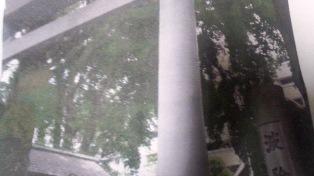
[Reference] "Chuo-ku Cultural Properties (4) Tangible Folk Cultural Properties-Faith-" (issued by Chuo-ku Board of Education)
"Chuo-ku Monoshiri Encyclopedia for Walking" (Supervised by Chuo-ku Tourism Association)
[Minori]
April 7, 2016 16:00
It's already the cherry blossom season.
Cherry blossoms are blooming from Aioi Bridge to Tsukuda River City 21, Paris Square, and Chuo-ohashi Bridge.
There are many cherry blossom viewing visitors.
As of April 4, it was still a bit cold, so I felt it would be in full bloom.
From Tsukuda River City, you can also see Eitai Bridge and the Tokyo Sky Tree.
Also, there are many cherry blossoms near Chuo-ohashi Bridge, so it is recommended.
The view of the Sumida River terrace in Shinkawa from Paris Square is also nice.
Tsukuda Park also has many cherry blossoms, seasonal flowers and trees, and plants, so you can stroll along the river.
It is also located behind Tsukuda Elementary School and Tsukuda Junior High School on the opposite side of River City 21.
Cherry blossoms are also located in the nearby Sumiyoshi-jinja Shirine, so I think it's a good walking course.
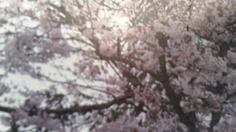 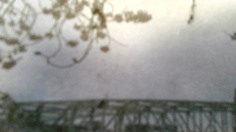
<walking course>
Aioi Bridge
↓
River City 21
In 1999 (1999), "Paris Square" was built in the area of River City 21.
From Paris Square, you can see the Eitai Bridge, the Tokyo Sky Tree and the Sumida River Terrace in Shinkawa.
↓
Chuo-ohashi Bridge
↓
The back of Tsukuda Elementary School and Tsukuda Junior High School on the opposite side of the road is Tsukuda Park.
↓
Sumiyoshi-jinja Shirine is located across Sumiyoshi Kobashi along the river.
・Reference
Guide map "Tsukuda" by Chuo-ku area
Supervision of "Chuo-ku Monoshiri Encyclopedia that can be seen on foot" Chuo-ku Tourism Certification Committee
"(Looking from colored postcards and old maps) Tokyo Sky Tree Past and Present Walk" Hiroshi Harashima, Publishing Co., Ltd. Nakakei Ide Edition
[Minori]
January 28, 2016 14:00
Hello, this is Minori.
This time, I went to Kachidoki.
At Kachidoki 4-chome, there are Toyo-in and Sumiyoshi-jinja Shirine, where the tombs of Tokasha 19 are located.
Toyo-in was famous as a Koin (Kiyomasa Kodo) in Zenryuji Temple in Zenryuji Temple, commonly known as Shinteramachi "Asakusa Permanent Town" (currently Moto-Asakusa 2-chome, Taito-ku), but was burned down in the Great Kanto Earthquake in 1923 (1923) It was relocated to its location as of May 1926 (1926). (By the way, Honji moved to Umeda 1-chome, Adachi-ku). He built a wooden main hall in 1927 (1927), a reinforced concrete charnel house in 1930 (1930), and a wooden warehouse in 1966 (1966).
The tomb of Jukasha 19 is located at the Toyoin Ossuary (indoor graveyard). The nineteen monuments "Tokasha 19 burial ground" (written by Musei Tokugawa) at the entrance of Toyo-in Temple were built by the Tokyo Film Company in February 1958 in the production of "Yaji Kita Dochuki". .
`` Tokaido Nakane Kurige '' is a story in which the main characters Yajirobei Tochimenya and Kitahachi travel on the Tokaido from Nihonbashi, and after Ise Sangu, take the form of a travel record that arrives in Kyoto. It became a masterpiece of 19. 19 died in 1831 (1832) and was buried in Toyoin.
Sumiyoshi-jinja Shirine is in the same Kachidoki 4-chome.
In resting place of portable shrines during the festival of Sumiyoshi-jinja Shirine, Tsukishima, Kachidoki and Harumi progressed, and as the shrine parishioner area expanded, resting place of portable shrines was established as a place of worship. It moved to Kachidoki 2-chome in 1930 (1930) and then to Kachidoki 4-chome in 1984 (1984). It's near Niijima Bridge.
If you exceed Asashio Kobashi (a bridge dedicated to bicycles and pedestrians, completed in March 2003 (2003), you can enjoy "Hot Plaza Harumi" (you can enjoy a heated pool and night view, outdoor jacuzzi, training area, and the latest machine) You can go out. In addition, if you walk straight along the same Harumi 5-chome toward the sea, you can also go to Harumi Wharf Park and Harumi Passenger Terminal.
<Reference>
[Tomb of Jukasha 19:
Bulletin board of Chuo-ku Board of Education
Supervision of "Chuo-ku Monoshiri Encyclopedia that can be seen on foot" Chuo-ku Tourism Certification Committee
Edited "Cultural Properties of Chuo-ku (4) Faith of Tangible Folk Cultural Properties", Social Education Division, Cultural Section
[Sumiyoshi-jinja Shirine]
Ieyasu 400 years Sumiyoshi Shrine Grand Festival Sumiyoshi Shrine, 370, 2nd land month Mutsumi
Sumiyoshi-jinja Shirine bulletin board (posted in resting place of portable shrines)
[Minori]
December 19, 2015 14:00
Hello, this is Minori.
I went to Nihonbashi. It  was easy to take a walk. was easy to take a walk.
It is said that Nihonbashi was first built in 1603 (1603), and the following year it became the starting point of Gokaido (Tokaido, Nakasendo, Nikko Dochu, Oshu Dochu, Koshu Dochu), a symbol of Edo, the center of Japan.
After entering the Meiji era, the center of this bridge was designated as the starting point of the national highway, and in 1911 (1911), the "Tokyo City Road Mark" was built.
Later, with the abolition of Toden, this mark was relocated to Hashizume Square, located near Nihonbashi Muromachi.
In 1911 (1911), it was replaced by a stone bridge with a double arch.
All the ornaments used for the stone bridge are made of bronze, and the balustrade decorative lighting pillars were equipped with imaginary animals, Kirin and lions. The decoration was in charge of the architect Yorinaka Tsumaki.
(See "Chuo-ku Monoshiri Encyclopedia", which can be seen on foot.)
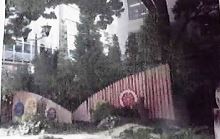 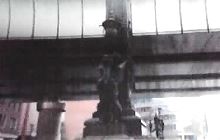
In addition, there is a monument to the Nihonbashi Originki, which was set up by Nihonbashi Ward in 1936 (1936) in Hana no Hiroba on the west side of Minamizume, where the high billboard was located during the Edo period.
In commemoration of the 80th anniversary in 1991 (1991), the plaza was maintained from July 1990 (1990) to May of the following year, and the completion ceremony was held in May. .
Based on the opinions of local people, we implemented Nihonbashi Hashizume as an oasis in the city center to meet people and revitalize the area.
In line with this maintenance work, we have recruited nicknames to the general public and decided to preserve them as a monument so that they can get acquainted with the nickname for a long time.
(Refer to the monument of the Tokyo National Highway Construction Office of the Ministry of Construction on October 3, 1991)
After the Meiji Restoration, the new government worked at a rapid pace to reform the town administration along with the establishment of the Central Political Organization.
In 1878 (1878), the county ward municipal organization law was enacted, and there were 15 wards and 6 counties, including Nihonbashi and Kyobashi wards, in Tokyo.
Shortly after the war, in March 1947 (1947), when Tokyo became a 22-ward system (later 23 wards), Nihonbashi Ward and Kyobashi Ward merged to form Chuo-ku now.
(See "Chuo-ku Monoshiri Encyclopedia", which can be seen on foot.)
[Minori]
Nov. 20, 2015 18:00
Hello, Minori.
This is the story of Fukutoku Shrine "Mebuki Shrine".
Fukutoku Shrine is located near Choredo Muromachi.
Fukutoku Shrine seems to have already been enshrined in the early Heian period, during the Jogan period of the Emperor Seiwa period (859-876).
It was enshrined as Inari Shrine in Fukutoku Village, which was a village of Musashino, and took the place name to Fukutoku Shrine.
The first Shogun Ieyasu Tokugawa visited our company for the first time in August 1590 (1590), when he entered Edo.
Since then, I have been visiting several times.
In addition, the second shogun Hidetada Tokugawa visited the shrine on New Year's Day 8, 1614 (1614).
He praised, "Fukutoku is a truly happy god."
At this time, I saw the spring buds sprouting at the skinned torii gate of Kuroki (sawtooth oak), an ancient example of Fukutoku Shrine.
The shrine is also known as "Mebuki Inari."
In February 1619 (1619), when he enshrined Benzai of Edo Castle, the Shogun himself delivered divine spirit.
He dedicated the banner of Yamato Nishiki, and stipulated that "shrines and temples Nawari is more than 333 tsubo."
It was popular because the lottery was officially recognized by the Shogunate as "Gomen wealth" in the Edo period.
Even now, many people come to visit this shrine if there is a lottery benefit.
The festival is the first noon in February and the annual festival in May.
In the fall of 2014 (2014), shrine hall was revived thanks to the efforts of local people in Nihonbashi.
There is Fukutoku Shrine on the north side of Cored Muromachi. There's shrine office in the foreground.
Chozuya, which cleans hands before worship, has a sensor that allows water to flow when people approach.
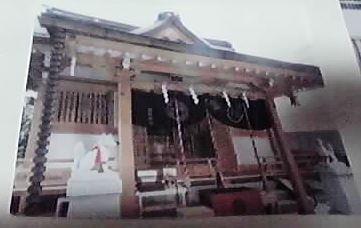
Fukutoku Shrine "Mebuki Shrine" enshrined deity Miyuo "Fukutoku Shrine shrine office" and Fukutoku Shrine historical book (stele) in the precincts of Fukutoku Shrine
SHOP & RESTAURANT GUIDE "& EARTH" and "Mitsui Fudosan"
"Chuo-ku Monoshiri Encyclopedia"
Refers to the Traffic Journal "Tokyo Traffic Safety Association".
[Minori]
October 17, 2015 18:00
Hello, this is Minori.
This is the story of a shrine in Ningyocho.
Ningyocho is the Nihonbashi Seven Lucky Gods.
There are Koami Shrine (Fukurokuju, Benzaiten), Chanogi Shrine (Fukuro-son), Suitengu (Benzaiten), Matsushima Shrine (Daikokujin), Suehiro Shrine (Vaisravana), Kasama Inari Shrine Tokyo Bessha (Shoujin), Sugimori Shrine (Ebisu God).
If you add Takarada Ebisu Shrine (Ebisu God) to this, it is popular for business prosperity because there are two Ebisu Gods in the eight shrines.
In connection with this, there will be Bettara City, which will be held on Monday, October 19 and 20 (Tue), mainly at Takarada Ebisu Shrine.
Bettazuke is a shallow salted radish pickled on a rice koji floor.
It is interesting to avoid those who have a malt so that they don't get koji when they take it home.
Some people who tried to put it on purpose appeared, and the shop also made a musical accompaniment saying, "Betara, Betara."
It seems that the city on the day before Ebisu-ko came to be called "Betara-shi".
It is said that the 15th Shogun Yoshinobu Tokugawa also liked to eat it.
[Koami Shrine (Fukurokuju, Benzaiten)]
~ Doburoku Festival at Koami Shrine~
This event is derived from Niiname-no-Matsuri, which appreciates the good harvest of new grains, and is served free of charge until evening after being offered to God.
At 0:00 p.m., a festival will be held in shrine hall, and at 0:30 a.m. "Sato Kagura Dance", designated as an important national Intangible Cultural Property, will be dedicated. Mimizuku Shitamachi, famous as a talisman for protection against misfortune, will also be awarded (paid).
Date and time: November 28 (27th for Saturday, 29th for Sunday, 29th)
※This year, November twenty-eighth is Saturday.
Location: Koami Shrine
[Chanogi Shrine (Hobukuro-son)]
In this area, the Nakayashiki of the Hotta family of the Sakura Domain in Shimousa (now Sakura, Chiba Prefecture), was enshrined as the guardian angel.
The tea tree planted around the shrine is said to be the origin of the name.
It is said to be the god of Hibushi because no fire has occurred not only in the mansion but also in the town for many years.
The Hotta family has been changed from Dewa Yamagata to 110,000 stones from the Sakura clan since 1761 (1761).
Fire extinguishing includes town fire extinguishing, regular fire extinguisher, and daimyo fire extinguisher, which are said to be Edo San fire extinguisher.
Among them, the defense of the Shimousa Sakura Domain is Edo Castle Nishinomaru.
From the Seven Lucky Gods Tour (Nihonbashi Shichifukukai), the Chanogi Shrine bulletin board (Chuo-ku Board of Education), and the "Chuo-ku Monoshiri Encyclopedia (supervised by Chuo-ku Tourism Certification Committee)"
|
Links
|
![]() .
.






